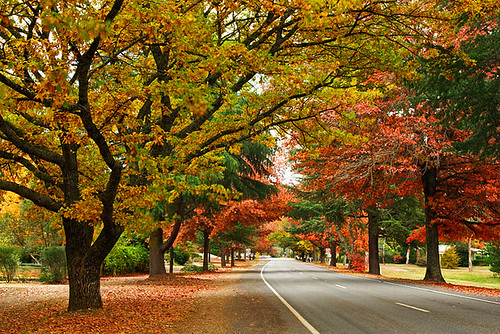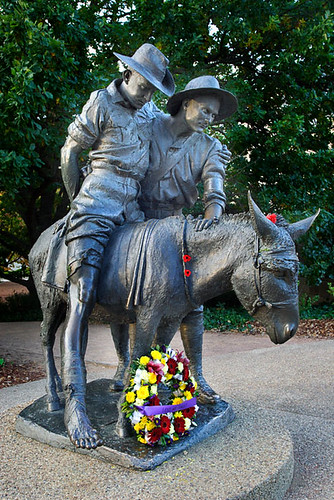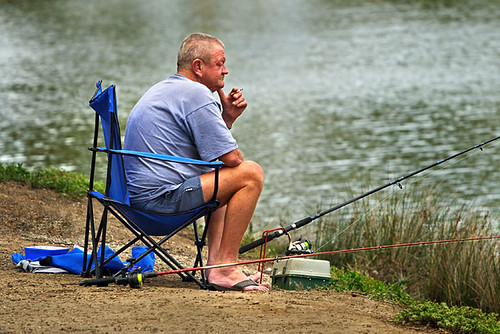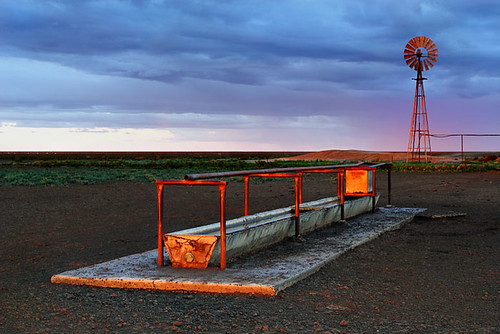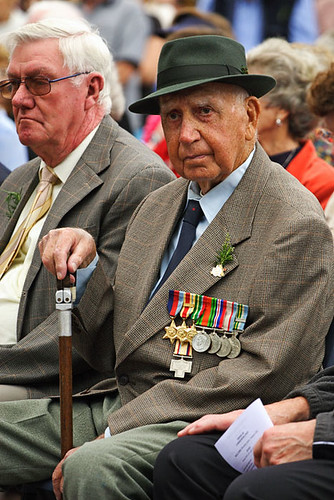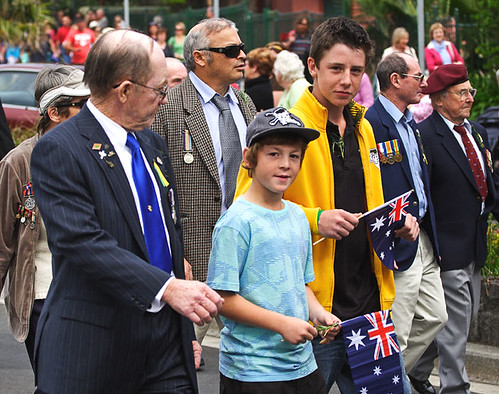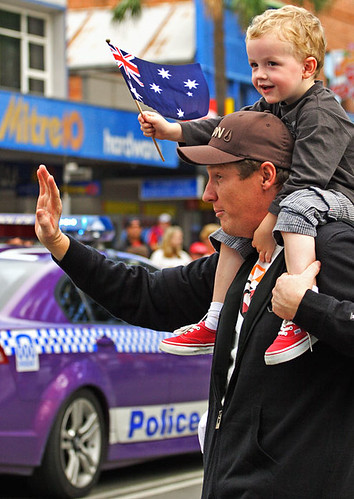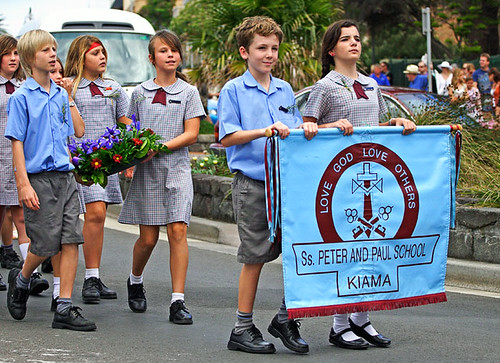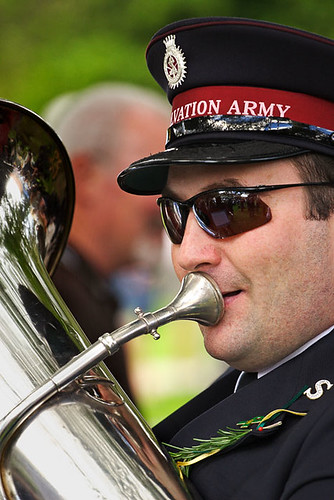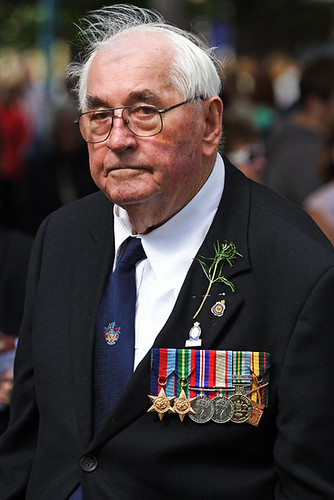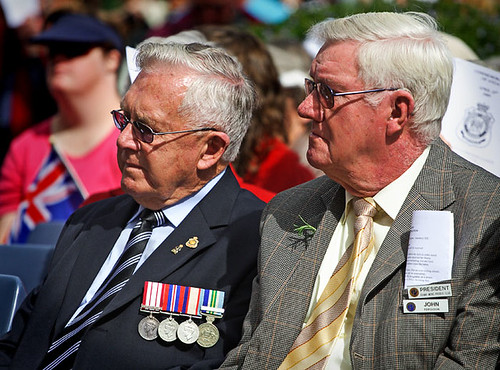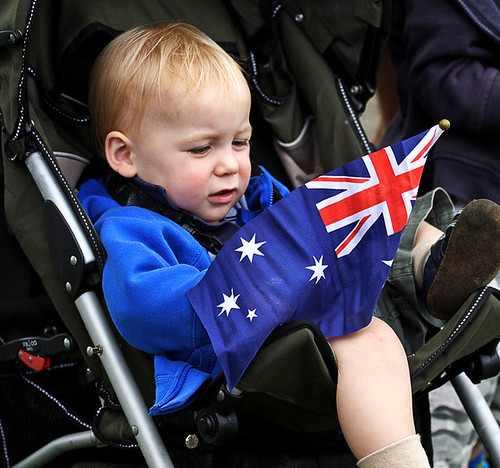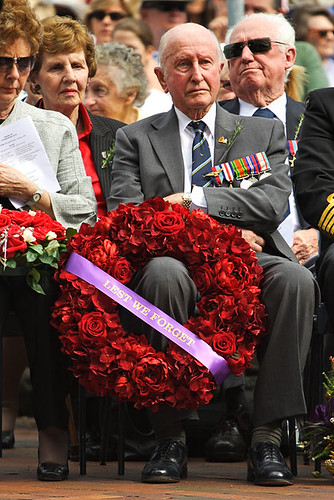By Darren Stones
Travel Bites Autumn 2010 informs as to what’s coming up, what’s going on, and what’s to see around Australia. From a high country autumn festival, to a snappy time with some crocs – there’s something for everyone.
New South Wales
Wentworth – For something completely different, head for the Perry Sandhills near Wentworth on Saturday 6 March, 2010. Music Under The Stars will feature the singing talent of Kasey Chambers amongst the sand dunes of this iconic natural landscape. Bring a table and chair, and watch films on the big screen. And, listen to the playing of the didgeridoo. Phone: (03) 5021 5100. www.artsmildura.com.au/mwaf2009/mwaf_packages.asp
Victoria
Bright – With deciduous trees displaying a brilliant palette of red, green and yellow, Bright is arguably the best place to see autumn at its finest in Australia. The 2010 Bright Autumn Festival is scheduled for Saturday 24 April –Wednesday 5 May, 2010. Festival highlights include: Autumn Art Show, gala day featuring brass and highland bands, brewery & winery tours, and evening entertainment. Phone: 1800 111 885. http://www.brightautumnfestival.org.au/
Queensland
Seventeen Seventy – Commemorating the visit of the Endeavour and landing of Lieutenant James Cook on 24 May 1770, the 18th Annual Captain Cook 1770 Festival will be held Friday 21 May – Sunday 23 May, 2010. Highlights include a re-enactment of Cook’s landing, street parade, live music and fireworks.
Mobile: 0458 49 1770. http://www.1770festival.com.au/
Western Australia
Margaret River – For wine, food, music and art, head for the Margaret River Wine Region Festival from Thursday 8 April – Monday 12 April, 2010. The festival will showcase a taste of the nation’s best wines. The Vintage Concert will feature live music from classic rockers Daryl Braithwaite and Jon Stevens at the Leeuwin Estate Amphitheatre on Sunday 11 April 11am-6pm. Also, if you enter the Win-A-Cellar competition, you’ll have a chance to win a case of premium Margaret River wines. http://www.margaretriverfestival.com/
South Australia
Adelaide – The Australian Dragon Boat National Championships will be held on the Ramsey Course at West Lakes from Thursday 22 April – Sunday 25 April, 2010. It promises to be a colourful affair, and for those in and around Adelaide, this splashing event will be a winner. See the Australian Dragon Boat Federation website for details. http://www.ausdbf.com.au/
Northern Territory
Darwin – Crocodylus Park has four guided tours each day where you can get up close and personal with the largest reptiles on Earth. See the crocs being fed at Darwin’s largest attraction and have a snappy good time. Lizards, snakes, big cats and monkeys are also on display. Open 7 days, 9:00am to 5:00pm. Phone: (08) 8922 4500 http://www.crocodyluspark.com/
Tasmania
Hobart – Mount Wellington overlooks relaxed Hobart and seemingly half the world. Okay, a slight exaggeration, but nevertheless the view from 1270 metres on a clear day may be the best of any capital city in Australia. It’s a leisurely 20 minutes’ drive from the CBD, and from here you can see Wrest Point Casino, the Derwent River, Tasman Peninsula and Tasman Bridge. If the weather closes in, head for the cosy Pinnacle Shelter. http://www.discovertasmania.com/
Australian Capital Territory
Canberra – The Australian War Memorial honours those who have served our nation on Anzac Day, Sunday 25 April, 2010. The Dawn Service commences at 5:30am, and the National Ceremony begins at 10:15am. The war memorial gates open approximately 15 minutes after the national ceremony, so consider venturing inside to view displays and learn about the Anzacs. The spirit of Anzac lives on in the nation’s capital on this special day. Lest We Forget. http://www.awm.gov.au/
Improving Your Image Through Visual Communications

Journalist - Photographer - Writer
Monday, 5 April 2010
Fishing the Maribyrnong River
By Darren Stones
Title: Fishing the Maribyrnong River
Photographer: Darren Stones
Location: Maribyrnong River, Essendon, Victoria, Australia
Date and time: Wednesday 20 January 2010. 12:42pm.
“For those seeking to enjoy recreational activities, the scenic Maribyrnong River in Essendon represents an oasis amongst bricks and mortar. Fishing along this stretch of waterway is popular, and I’ve witnessed many catches of bream during the summer months. I’ve seen blokes fishing alone and in the company of mates – all of whom seem relaxed and relishing the environment. This easy-to-access patch of suburbia is ideal for anyone to enjoy, and to think it’s so laid-back and within 15 minutes of the bustling Melbourne CBD.” – Darren Stones
Series: In The Field
Title: Fishing the Maribyrnong River
Photographer: Darren Stones
Location: Maribyrnong River, Essendon, Victoria, Australia
Date and time: Wednesday 20 January 2010. 12:42pm.
“For those seeking to enjoy recreational activities, the scenic Maribyrnong River in Essendon represents an oasis amongst bricks and mortar. Fishing along this stretch of waterway is popular, and I’ve witnessed many catches of bream during the summer months. I’ve seen blokes fishing alone and in the company of mates – all of whom seem relaxed and relishing the environment. This easy-to-access patch of suburbia is ideal for anyone to enjoy, and to think it’s so laid-back and within 15 minutes of the bustling Melbourne CBD.” – Darren Stones
Series: In The Field
Cattle Trough - Hay Plains
By Darren Stones
Title: Cattle Trough – Hay Plains
Photographer: Darren Stones
Location: Cobb Highway, Hay, NSW, Australia
Date and time: Tuesday 11 August, 2009. 5:48pm.
“A drenching shower had just passed and freshened-up this northern section of the Hay Plains in outback NSW. The silence and environment was invigorating. The ground had become slightly muddy, and with 400 metres of off-road driving in a two-wheel drive car to negotiate, the reward of a new image beckoned. A few hours earlier, I spotted this windmill in the distance and took the detour off the Cobb Highway to investigate. It seemed a promising location. With clouds passing quickly, we were in for a pleasing sunset. After taking a few shots, I returned to the car with an inch of mud on my shoes.” – Darren Stones
Series: In The Field
Title: Cattle Trough – Hay Plains
Photographer: Darren Stones
Location: Cobb Highway, Hay, NSW, Australia
Date and time: Tuesday 11 August, 2009. 5:48pm.
“A drenching shower had just passed and freshened-up this northern section of the Hay Plains in outback NSW. The silence and environment was invigorating. The ground had become slightly muddy, and with 400 metres of off-road driving in a two-wheel drive car to negotiate, the reward of a new image beckoned. A few hours earlier, I spotted this windmill in the distance and took the detour off the Cobb Highway to investigate. It seemed a promising location. With clouds passing quickly, we were in for a pleasing sunset. After taking a few shots, I returned to the car with an inch of mud on my shoes.” – Darren Stones
Series: In The Field
Sunday, 4 April 2010
5 tips for photographing Anzac Day
By Darren Stones
Travel photography involves more than photos of sunsets, landscapes and architecture, but most photographers seem hesitant to photograph people they don’t know. People are an integral part of a city or town’s heartbeat, and people are inquisitive by nature and enjoy looking at photos of people. Major outdoor events in cities and towns are prime opportunities for photographers to undertake travel photography as it’s relatively easy to blend in with large crowds. With some research under your belt, and suitable equipment for the task, consider photographing an Anzac Day march and ceremony.
On Anzac Day in recent years, I’ve been away from home undertaking travel photography in VIC, ACT and NSW. The primary purpose was to photograph the splendid autumn colours on display; however my mind was fixed on expanding my photographic library.
In 2009, I was visiting Kiama in NSW and decided to photograph the local Anzac Day march and ceremony. Being from out of town, I had no idea where the march would start and finish. I headed out early for a coffee at a local café and began chatting to the locals so I could ascertain where the march would start and finish. The march was scheduled to commence at the Kiama Town Hall, head north-east along Manning Street, turn left at the roundabout into Terralong Street, and proceed to the imposing Memorial Arch at the intersection of Collins and Terralong Streets.
I surveyed the streets for an hour-and-a-half before the march searching for positions which would avoid distracting backgrounds in my photographs. Before the march commenced, the clouds rolled in and lighting conditions became favourable as harsh shadows disappeared from people’s faces.
With youngsters waving Australian flags, school children carrying banners, teenagers and family members wearing medals, older vets being pushed in wheelchairs, and proud returned service men and women marching, there were numerous opportunities to take photos.
The Salvation Army Band was in attendance, and this later provided opportunities for close-up shots of musicians playing instruments. With a broad age range of people marching, and later congregated for the official ceremony, I believe it was an interesting event to photograph. I trust the following tips inspire you to photograph on Anzac Day.
No. 1 – Look for interesting faces
Children who have a look of excitement on their faces tend to be good photographic subjects in a crowd. If you see a child waving a small Australian flag, keep your camera pointed towards them for a while and take a few shots. You may not realise it at the time whether you’ve captured an interesting facial expression, so the trick is to keep shooting.
No. 2 – Equipment to use
Travel photographers use a range of lenses, however some prefer to use one camera and one lens when photographing an outdoor event. By doing so, it allows you to concentrate on the subject matter and be less concerned with equipment. Zoom lenses in the range of 70-200mm are a popular choice as they provide versatility whilst walking around. Depth of field is a major factor and the best photos tend to be those which are taken with a shallow depth of field. Anywhere in the range of f/2.8-f/5.6 seems to produce pleasing results. A wide-angle zoom is handy if you can position yourself close to the action. You can produce dynamic portraits by moving in close and using a wide-angle setting. A second camera body is ideal as it can eliminate the need to changing lenses. If you use one body only, it may be best to use a lens in the range of 70-200mm.
No. 3 – Camera settings
I prefer to keep camera settings simple for these types of events. I use aperture priority, set the aperture to f/4, and adjust the ISO as conditions change. Outdoor events generally allow for shooting 100-400 ISO, with preference given to shooting an ISO as low as possible. Shutter speeds are critical for sharpness, and my preference is to shoot at 1/500sec and faster.
No. 4 – The angle of light
Finding the ideal positions to photograph people at Anzac Day processions can be difficult, however the most important advice I can offer is to keep the sun at your back. This will help alleviate sun flare in your photos, blown out highlights in the background, and dark shadows on faces.
No. 5 – Be respectful and have fun
Anzac Day is a day of reflection, and is probably Australia’s most patriotic day. My experience is that people are not surprised to have their photograph taken on this day when attending events. Be respectful and acknowledge someone if you make eye contact. A nod of the head and brief smile will put people at ease. Wear an Anzac badge and do your best to blend in with the crowd. Lest We Forget.
Travel photography involves more than photos of sunsets, landscapes and architecture, but most photographers seem hesitant to photograph people they don’t know. People are an integral part of a city or town’s heartbeat, and people are inquisitive by nature and enjoy looking at photos of people. Major outdoor events in cities and towns are prime opportunities for photographers to undertake travel photography as it’s relatively easy to blend in with large crowds. With some research under your belt, and suitable equipment for the task, consider photographing an Anzac Day march and ceremony.
On Anzac Day in recent years, I’ve been away from home undertaking travel photography in VIC, ACT and NSW. The primary purpose was to photograph the splendid autumn colours on display; however my mind was fixed on expanding my photographic library.
In 2009, I was visiting Kiama in NSW and decided to photograph the local Anzac Day march and ceremony. Being from out of town, I had no idea where the march would start and finish. I headed out early for a coffee at a local café and began chatting to the locals so I could ascertain where the march would start and finish. The march was scheduled to commence at the Kiama Town Hall, head north-east along Manning Street, turn left at the roundabout into Terralong Street, and proceed to the imposing Memorial Arch at the intersection of Collins and Terralong Streets.
I surveyed the streets for an hour-and-a-half before the march searching for positions which would avoid distracting backgrounds in my photographs. Before the march commenced, the clouds rolled in and lighting conditions became favourable as harsh shadows disappeared from people’s faces.
With youngsters waving Australian flags, school children carrying banners, teenagers and family members wearing medals, older vets being pushed in wheelchairs, and proud returned service men and women marching, there were numerous opportunities to take photos.
The Salvation Army Band was in attendance, and this later provided opportunities for close-up shots of musicians playing instruments. With a broad age range of people marching, and later congregated for the official ceremony, I believe it was an interesting event to photograph. I trust the following tips inspire you to photograph on Anzac Day.
No. 1 – Look for interesting faces
Children who have a look of excitement on their faces tend to be good photographic subjects in a crowd. If you see a child waving a small Australian flag, keep your camera pointed towards them for a while and take a few shots. You may not realise it at the time whether you’ve captured an interesting facial expression, so the trick is to keep shooting.
No. 2 – Equipment to use
Travel photographers use a range of lenses, however some prefer to use one camera and one lens when photographing an outdoor event. By doing so, it allows you to concentrate on the subject matter and be less concerned with equipment. Zoom lenses in the range of 70-200mm are a popular choice as they provide versatility whilst walking around. Depth of field is a major factor and the best photos tend to be those which are taken with a shallow depth of field. Anywhere in the range of f/2.8-f/5.6 seems to produce pleasing results. A wide-angle zoom is handy if you can position yourself close to the action. You can produce dynamic portraits by moving in close and using a wide-angle setting. A second camera body is ideal as it can eliminate the need to changing lenses. If you use one body only, it may be best to use a lens in the range of 70-200mm.
No. 3 – Camera settings
I prefer to keep camera settings simple for these types of events. I use aperture priority, set the aperture to f/4, and adjust the ISO as conditions change. Outdoor events generally allow for shooting 100-400 ISO, with preference given to shooting an ISO as low as possible. Shutter speeds are critical for sharpness, and my preference is to shoot at 1/500sec and faster.
No. 4 – The angle of light
Finding the ideal positions to photograph people at Anzac Day processions can be difficult, however the most important advice I can offer is to keep the sun at your back. This will help alleviate sun flare in your photos, blown out highlights in the background, and dark shadows on faces.
No. 5 – Be respectful and have fun
Anzac Day is a day of reflection, and is probably Australia’s most patriotic day. My experience is that people are not surprised to have their photograph taken on this day when attending events. Be respectful and acknowledge someone if you make eye contact. A nod of the head and brief smile will put people at ease. Wear an Anzac badge and do your best to blend in with the crowd. Lest We Forget.
Friday, 2 April 2010
Published in Discover Australia magazine Issue 1 March 2010
By Darren Stones
I'm thrilled to have my various articles and travel photography published in Discover Australia magazine Issue 1: March 2010. The magazine is the official magazine of the Australian Travel Photography and Writing group which has 766 members.
As founder, host and journalist of the Australian Travel Photography and Writing (ATP&W) group, I'm pleased to see this free publication come to fruition as it's providing a rare opportunity for budding and experienced Australian travel writers and photographers to showcase their skills, and inform a worldwide audience of Australian travel and tourism experiences.
Discover Australia Issue 1: March 2010 is available for viewing in PDF format via the following link and by clicking on the front cover graphic below. The publication can be saved to your computer and shared with family and friends.
Discover Australia magazine Issue 1, March 2010
The magazine has an appointed volunteer editorial team consisting of: Leanne Nelson, Editor; Darren Stones, Journalist; Susan Adey, Deputy Editor; Nerida Smith, Assistant to the Editor. Their responsibility is to publish the magazine, seek and provide quality content, seek interesting and informative travel writing from group members, search for and seek quality travel photography from group members, communicate with contributors, conduct a photography competition, arrange sponsorship, and promote the magazine via email, and various websites including RedBubble, Facebook and Twitter.
I had the vision and concept for the magazine, and with the support and dedication of the editorial team, and contributions and support from members of the ATP&W group, Discover Australia has become a reality.
Articles which I've had published in the first issue of the magazine include:
* From the journo's desk
* What's happening in the ATP&W group
* The journey chronicled
* Travel Bites
* 5 tips for photographing Anzac Day
The magazine has impressed many people and they have kindly expressed their thoughts in writing within the Australian Travel Photography and Writing group and other areas on the internet.
Greg Barton, Editor, Australian Traveller magazine - which is Australia's best-selling travel magazine - has described Discover Australia as "Top Stuff!" Greg was appointed as Patron of the ATP&W group by me in May 2009.
Enjoy reading Discover Australia Issue 1: March 2010. I sure enjoyed being part of the first issue.
I'm thrilled to have my various articles and travel photography published in Discover Australia magazine Issue 1: March 2010. The magazine is the official magazine of the Australian Travel Photography and Writing group which has 766 members.
As founder, host and journalist of the Australian Travel Photography and Writing (ATP&W) group, I'm pleased to see this free publication come to fruition as it's providing a rare opportunity for budding and experienced Australian travel writers and photographers to showcase their skills, and inform a worldwide audience of Australian travel and tourism experiences.
Discover Australia Issue 1: March 2010 is available for viewing in PDF format via the following link and by clicking on the front cover graphic below. The publication can be saved to your computer and shared with family and friends.
Discover Australia magazine Issue 1, March 2010
The magazine has an appointed volunteer editorial team consisting of: Leanne Nelson, Editor; Darren Stones, Journalist; Susan Adey, Deputy Editor; Nerida Smith, Assistant to the Editor. Their responsibility is to publish the magazine, seek and provide quality content, seek interesting and informative travel writing from group members, search for and seek quality travel photography from group members, communicate with contributors, conduct a photography competition, arrange sponsorship, and promote the magazine via email, and various websites including RedBubble, Facebook and Twitter.
I had the vision and concept for the magazine, and with the support and dedication of the editorial team, and contributions and support from members of the ATP&W group, Discover Australia has become a reality.
Articles which I've had published in the first issue of the magazine include:
* From the journo's desk
* What's happening in the ATP&W group
* The journey chronicled
* Travel Bites
* 5 tips for photographing Anzac Day
The magazine has impressed many people and they have kindly expressed their thoughts in writing within the Australian Travel Photography and Writing group and other areas on the internet.
Greg Barton, Editor, Australian Traveller magazine - which is Australia's best-selling travel magazine - has described Discover Australia as "Top Stuff!" Greg was appointed as Patron of the ATP&W group by me in May 2009.
Enjoy reading Discover Australia Issue 1: March 2010. I sure enjoyed being part of the first issue.
Subscribe to:
Posts (Atom)

